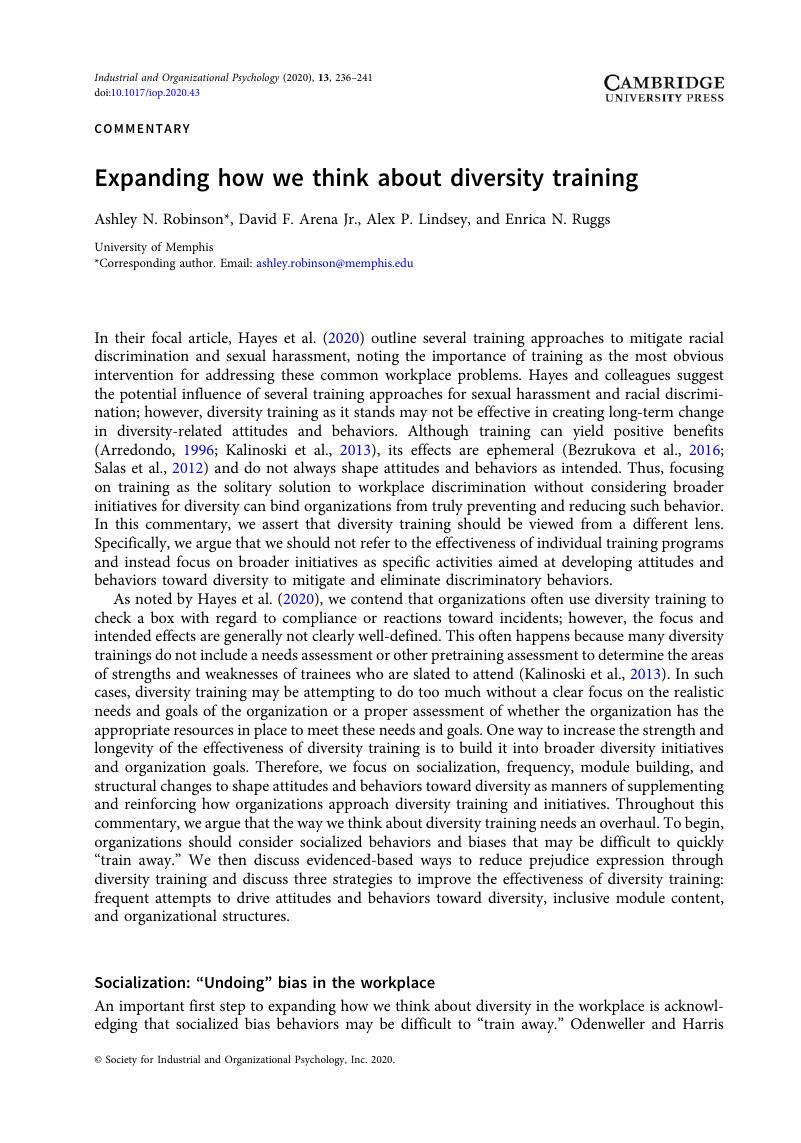Crossref Citations
This article has been cited by the following publications. This list is generated based on data provided by Crossref.
Fite, Brett Z.
Hinostroza, Virginia
States, Lisa
Hicks-Nelson, Alexandria
Baratto, Lucia
Kallianos, Kimberly
Codari, Marina
Yu, Brenda
Jha, Priyanka
Shams, Mana
Stoyanova, Tanya
Chapelin, Fanny F.
Liu, Anna
Rashidi, Ali
Soto, Fernando
Quintana, Yuri
Davidzon, Guido Alejandro
Marycz, Krzysztof
Gibbs, Iris C.
Chonde, Daniel B.
Patel, Chirag B.
and
Daldrup-Link, Heike Elisabeth
2021.
Increasing Diversity in Radiology and Molecular Imaging: Current Challenges.
Molecular Imaging and Biology,
Vol. 23,
Issue. 5,
p.
625.
El-Amin, Abeni
2022.
Implementing Diversity, Equity, Inclusion, and Belonging in Educational Management Practices.
p.
1.
Decker, Emy Nelson
and
Simpson, Lance
2023.
Implementing Project READY at an academic library: Survey analysis of a DEI training experience.
The Journal of Academic Librarianship,
Vol. 49,
Issue. 2,
p.
102634.
Woods, Rashida
Harris, Kevin
Wiggins, John Coles
Wilson Davis, Marcelle
and
Woleben, Christopher
2023.
The State of Diversity, Equity, Inclusion, and Justice in Pediatric Fellowship Programs.
Pediatric Annals,
Vol. 52,
Issue. 7,
Bae, Yejin
and
Jeong, Jisun
2024.
The effectiveness of a brief video-based intervention in reducing gender bias in Korea.
Frontiers in Psychology,
Vol. 15,
Issue. ,
Fitzgibbons, Megan
and
Lei, Chloe
2024.
What is ideal EDI learning for academic librarians? Discovering EDI learning stories through appreciative inquiry.
The Journal of Academic Librarianship,
Vol. 50,
Issue. 5,
p.
102908.



